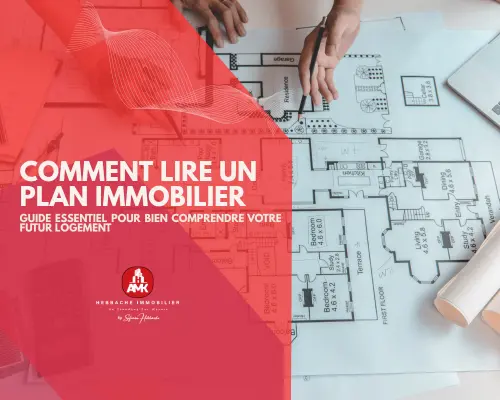How to read a real estate plan: essential guide to understanding your future home
When you consult a real estate project, several plans are provided to you. Each one has a specific role and helps you to better visualize your future home.
🔍 The different types of plans to know
The mass plan It offers a general view of the entire project on the land. You will see the location of the building(s), accesses, parking, green spaces and common areas.
The situation plan This plan allows you to locate the project in its urban environment: street, neighborhood, nearby infrastructure, orientation (notably north).
The cross-section plan It is a vertical view that provides information on interior volumes, ceiling heights and level differences between floors.
The floor plan This is the one you will study most carefully. It presents the interior layout: rooms, openings, circulation, etc.
👉 Each plan provides you with key information on orientation, lighting, space distribution and common areas.
📐 Deciphering symbols and legends
Plans use a standardized graphic language. Here are a few frequent symbols to know:
Thick lines: load-bearing walls
Thin lines: partitions
Curved arrows: door opening direction
Semicircles: windows
Simple shapes (rectangles, circles): equipment (furniture, kitchen, bathroom)
Hatching or dotted lines: technical areas, beams, stairs or elements to be modified
✅ Always read the legend of the plan. It allows you to understand the conventions used by the architect or developer.
📏 Analyzing usable surfaces and volumes
A good plan must indicate several important surfaces:
Habitable surface: interior surface actually usable, excluding walls, balconies or basements.
Usable surface: sometimes includes annexes such as storage areas.
Surfaces per room: check the dimensions of the living room, bedrooms, kitchen.
Volumes (seen on the cross-section plan): they give an idea of the ceiling height and ease of circulation.
🛋️ Evaluating distribution and interior circulation
A well-thought-out layout is recognizable by:
A clear separation between day and night areas
A fluid circulation, without wasted space in the corridors
Practical access to water rooms, storage, terraces or balconies
An optimized orientation: living room exposed south or west, bedrooms on the east or north side for more freshness
💡 Layout often takes precedence over gross surface area: a well-designed home will be more pleasant to live in, even if it is slightly smaller.
⚠️ Details not to be neglected
Some pitfalls are common when reading a plan:
Forgetting technical ducts or non-movable elements
Not anticipating the impact of doors and windows on furniture
Underestimating the space needed for your equipment
Ignoring a post or beam that could hinder the layout
In case of doubt, do not hesitate to ask your AMK Hebbache Immobilier advisor. We are here to guide you through every detail.
🧭 Reading a plan is already starting to live in your future home
Learning to read a plan is to project oneself. By understanding the symbols, surfaces, circulation and orientation, you are able to identify the strengths and potential improvements to be made to your home.
It is an essential step, whether you are buying to live or to invest intelligently.





